The House of Pagani
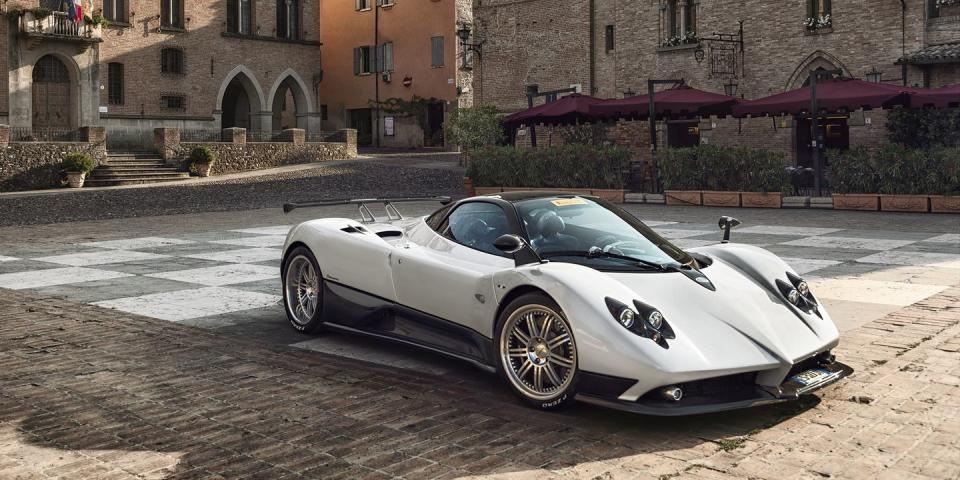
THE BATHROOM sinks at Pagani Automobili’s factory outside Modena are breathtaking: deep basins sculpted from swaths of gleaming carbon fiber. The lounge chairs in the next room are carbon, too, stylish thrones that evoke Roy Eames and the starship Enterprise. An eight-foot carbon-fiber table fills the glass-walled conference room. Horacio Pagani, the 63-year-old eponymous CEO, sits at the end, relaxed.
“This table is only two days old,” Pagani says through a translator, thumbing the edge.“We built it to discover how to bond carbon and wood. Nobody had done that before, so we designed the furniture and learned.”
Long before setting his mind to bathroom sinks and office furniture, Pagani bet his future on carbon composites. He pioneered carbon-fiber technology at Lamborghini in the Eighties and helped develop the Countach Evoluzione, the company’s first car that used composites throughout the body and chassis. Thrilled by the result, Pagani implored Lamborghini to invest in an autoclave, essentially a giant pressure cooker used to harden composite parts.
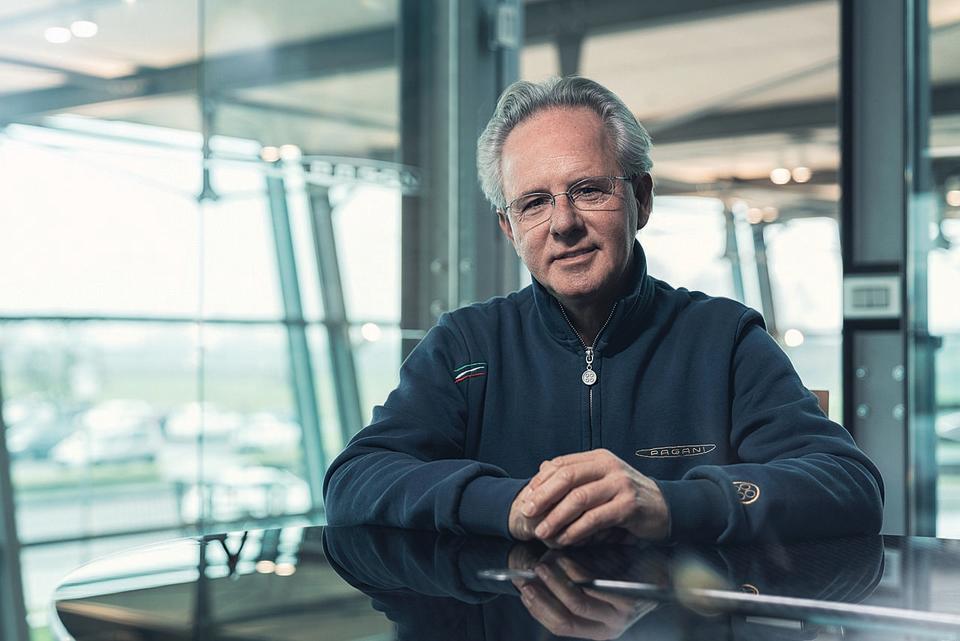
Lamborghini balked. “If Ferrari doesn’t have an autoclave, why do we need an autoclave?” was the response. That sentiment incensed Pagani. He pedaled his bicycle away from Lamborghini’s Sant’Agata factory, secured a line of credit from his bank, and bought the autoclave himself. The company that would become Pagani Automobili was born.
Thirty years later, that autoclave still lives at the Pagani factory, busy as ever. The old unit is dwarfed by two huge, newer models, proof that Pagani’s bet paid off. Nearly every modern automaker now employs composites in some way, Lamborghini included.
Carbon forms the backbone of Pagani Automobili’s future, too. That trio of ovens runs constantly, the heart of the operation, opening and closing their massive doors in steady rhythm to pump out parts for two models: the Zonda and the Huayra. Pagani designed the latter with more than 240 separate composite components. Each carbon piece is built and finished by hand, to painstaking perfection. Another carbonintensive supercar, code-named C10, will spring from the autoclaves soon.
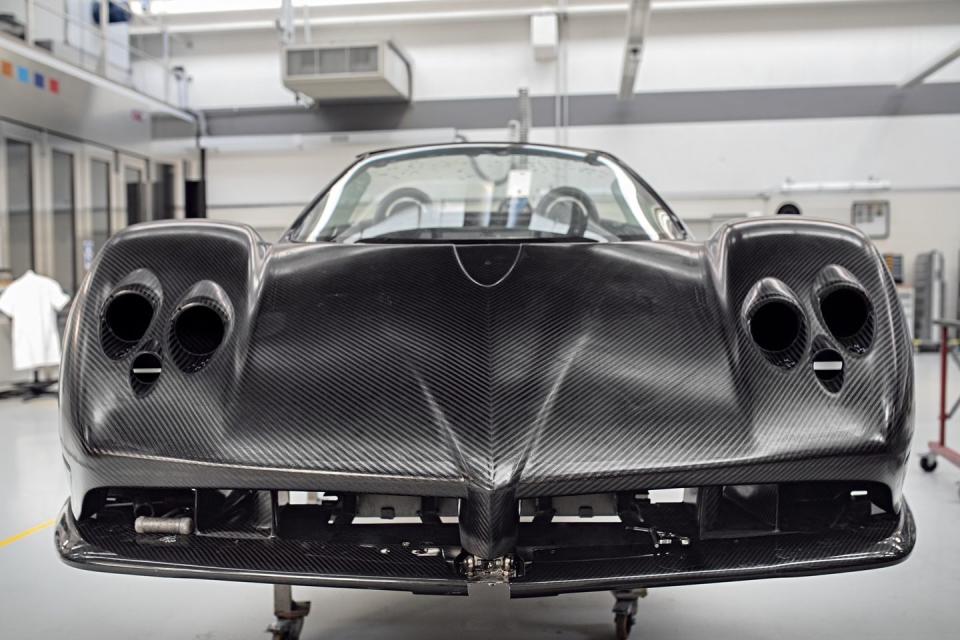
Adopting composites seemed obvious to Pagani in the old days. Traditional automakers may have understood the benefits of the materials, he admits, but none invested in composite technologies in the Nineties like he did. The old guard was comfortable building cars from steel, aluminum, and iron. Now, Pagani sells its carbon-manufacturing expertise to several automakers.
“Change means effort, and people don’t sacrifice their life [for progress] anymore,” Pagani says. “To discover, you have to go far from the coast, like Christopher Columbus. It’s a risk. You can get lost. But if you want to discover, you have to go into the dark.”
Pagani left comfortable shores early on, emigrating from Argentina to Italy to be close to the cars he idolized. When he became CEO of his own company, he spent a few years inventing new carbon composites and imagining how they’d be applied to his first automotive creation: the Zonda. Pagani penned the supercar in 1992, but it wasn’t built until 1999. The car arrived to ridicule from many, Pagani says. Despite that, something about the Zonda’s bug-eyed design stuck, and 20 years later, the car’s cab-forward layout still resonates.
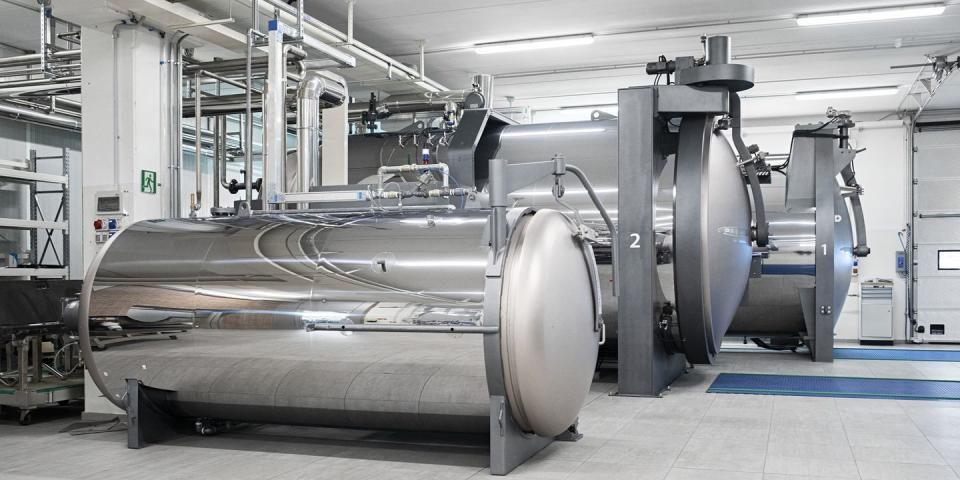
Note three hypercars that came decades after Pagani first sketched the Zonda: the McLaren P1, the LaFerrari, and the Porsche 918 Spyder. Each has a cockpit that seems to float over the front wheels, with a long, elegant stretch of body trailing behind. All three have roots in the Zonda’s silhouette, Pagani says. But even those vehicles don’t let light into their carbon cabins like a Zonda, an overlooked facet that can make an intimidating hypercar feel airy and accessible.
“Probably in 10 years, you’ll see the Huayra and see something [that still looks] modern. Something that is not 20 years old. It’s because when we look, what we try to find is something that stands alone, outside convention,” Pagani says.
That longevity makes Pagani’s designs rare, but they must endure, he explains. His company is small. Despite its success, Pagani has only had two model lines in its 30-year history. The firm doesn’t have the resources to build new models at the rate of mainstream automakers, so the design time Pagani invests in each car dwarfs that of modern supercars.
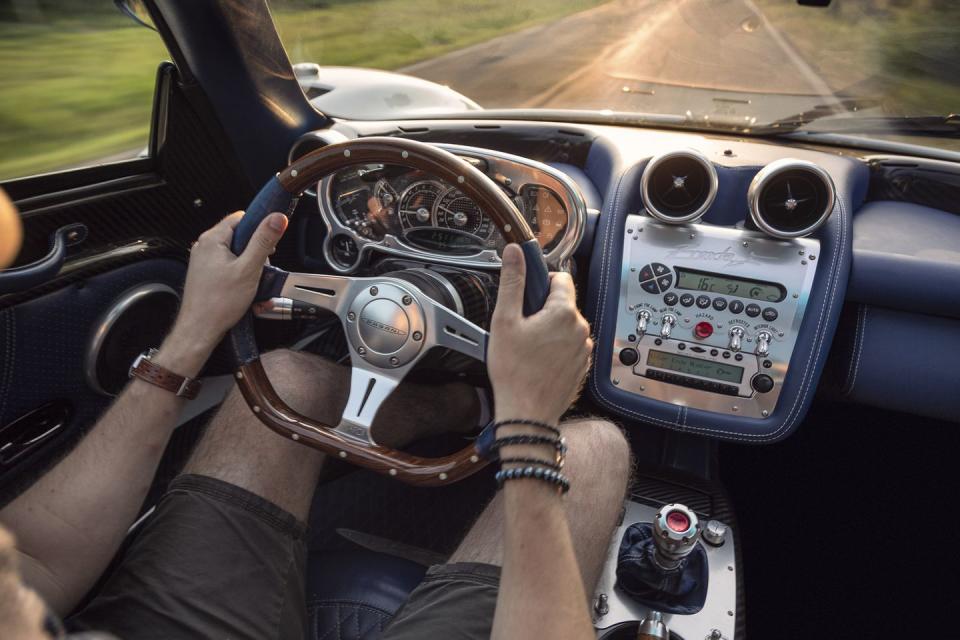
“What we are good at doing here is perfecting the details, which means spending time with the design,” he says. “In other companies, a design process is probably between three and six months, and then you stop. And you can’t go back. With us, the Huayra took five years to design. So in five years, you see that we can think about where to go and what to do. We take time when we see there’s an element that could be more perfect.”
Attention-soaked details embellish Pagani cars and spill into every corner of the factory. There’s carbon trim inlaid in the shop floor. Workers do a shocking amount of their high-precision work by hand. Each bolt on the Huayra is milled from titanium and laser engraved with a Pagani crest, each car carrying around $140,000 in fasteners alone. When you take delivery of your Huayra at the factory, a pianist will play your favorite song as the car is unveiled. Those wondrous bathroom sinks? Drops in an ocean.
Pagani leads me away from the factory floor, through his company’s museum, over to a vast wall covered in sketches. He drew them all, thousands over the years. He points to drawings from the Eighties, then holds up photos of more modern supercars. The nose of Bugatti’s EB 110, the rear vent on the 918, the air-directing buttress on the LaFerrari: Pagani imagined them all on paper, years before other automakers implemented them. He even understood the potential of blown diffusers long before they were adopted in Formula 1. The drawings prove it.
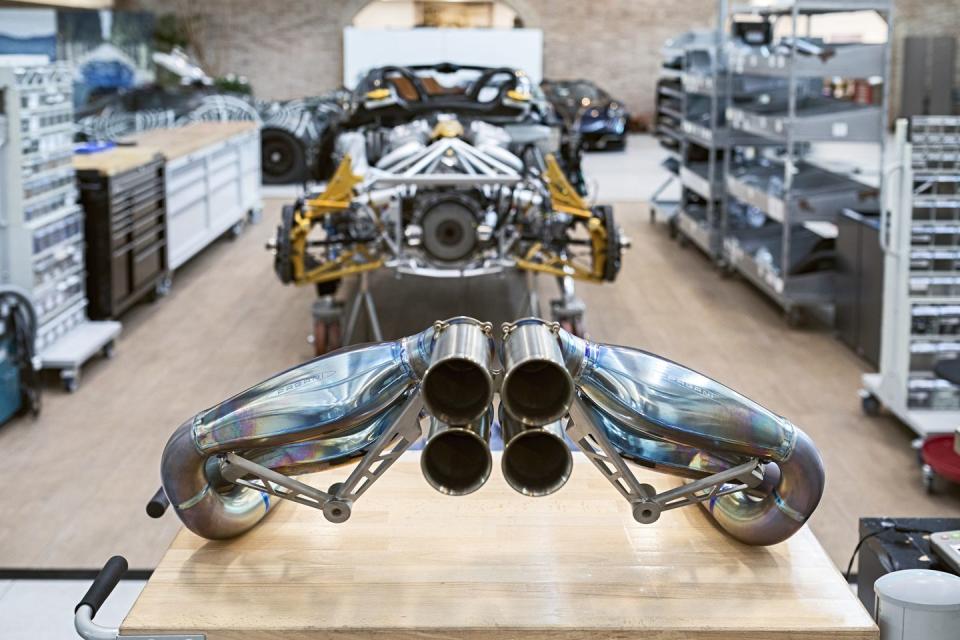
How does it feel to have his ideas appear on other cars, years later? “I’m very proud, on one hand, but not so happy for the other manufacturers,” he says. “For example: We know Ferrari very well. We have a good relationship with Ferrari. We know a few people who work for Ferrari who were in the early design meetings for LaFerrari. When LaFerrari was first unveiled, one of the employees remarked, ‘Why don’t you just put a Pagani badge on the front? The design is close enough.’”
I ask Pagani if tightening safety regulations and vaulting performance goals conspired to overlap his designs with those of mainstream hypercars—if convergent evolution dictated an ultimate hypercar shape, shared in part with his design. No, he says. Regulations merely provide a box within which to design. If you possess enough imagination, they will never feel limiting. Especially if you take enough time.
Time is a subject that concerns Pagani these days. He’s spending more of it bicycling. He’s raising a pair of German Shepherd pups that seem determined to destroy his garden. Meanwhile, Pagani’s web of designers, engineers, assemblers, mechanics, strategists, and workers are dedicating thousands of hours to the upcoming C10 hypercar, pooling their efforts to create the company’s future.
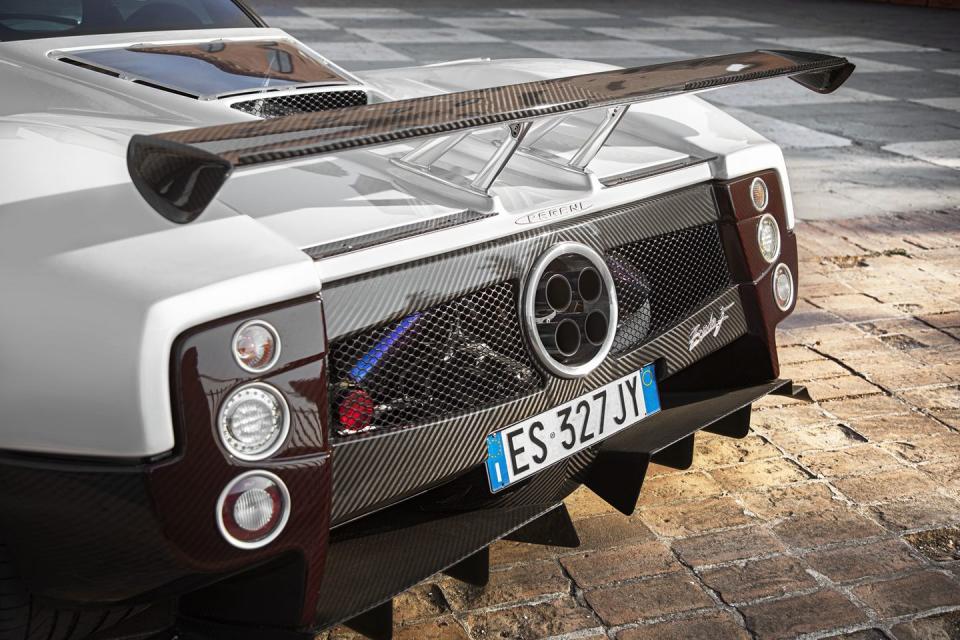
The new factory was completed in 2016. The building itself is tens of thousands of square feet larger than the shed that spawned the Zonda, and the effort to control every detail of the process has expanded beyond the grasp of any one man, even the one who started the company. Horacio Pagani seems okay with that.
“At the beginning, I was taking care of every single thing. When the toilet paper was missing from the bathrooms, I was going in there to check myself,” he chuckles. “But of course the company has been growing still, and I’ve been trying to spend as much time as I can doing what I love the most—that is designing and materials.”
Pagani has narrowed his focus. The C10 will bear his fingerprints, but the final iteration will be left to his team of designers. He’s provided them with dimensions—length, width, wheelbase, and other basics. He lends his expertise often, but he’s trying to teach them to fish, so to speak. Or, rather, teach them how to design a Pagani. Through it all, the man demands iteration (there are more than 4000 drawings of the new car), collaboration, and a relentless commitment to perfection—qualities that will ensure the survival of Pagani long after Horacio leaves the company someday.
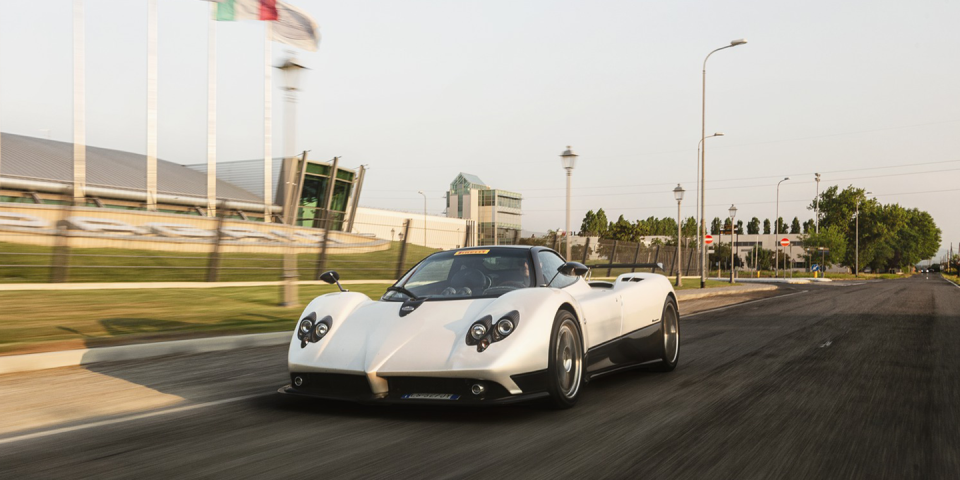
“Our mission is to create something unique. Something that stands alone. Today, most designers follow trends. If you look at cars, you find in several brands things they have in common. Sometimes you don’t realize if you’re looking at a BMW or a Mercedes or an Audi.”
Pagani thinks people in the car industry are scared—of autonomy, electrification, or changing regulations—and hedging their bets with milquetoast designs. “We are not worried here,” Pagani says of his company. “We are probably too excited. What could a Pagani look like as a full-electric car? How are we going to excite the client to buy these cars? We are super excited. Not worried, not scared.”
Following a day meandering the factory, we retreat to Horacio Pagani’s family home. The estate was built atop a stone farmhouse overlooking a tract flowing down to a lake. It’s bucolic bliss. Ever the autodidact, Pagani designed the home himself and oversaw the build. “I don’t trust architects,” he laughs. “So I had to do the house on my own.” For most, striking a healthy work/life balance doesn’t mean designing a house instead of a hypercar. Pagani may one day have a restful retirement, but that can wait. The future is coming, and he’ll have his say.
You Might Also Like

 Yahoo Autos
Yahoo Autos 